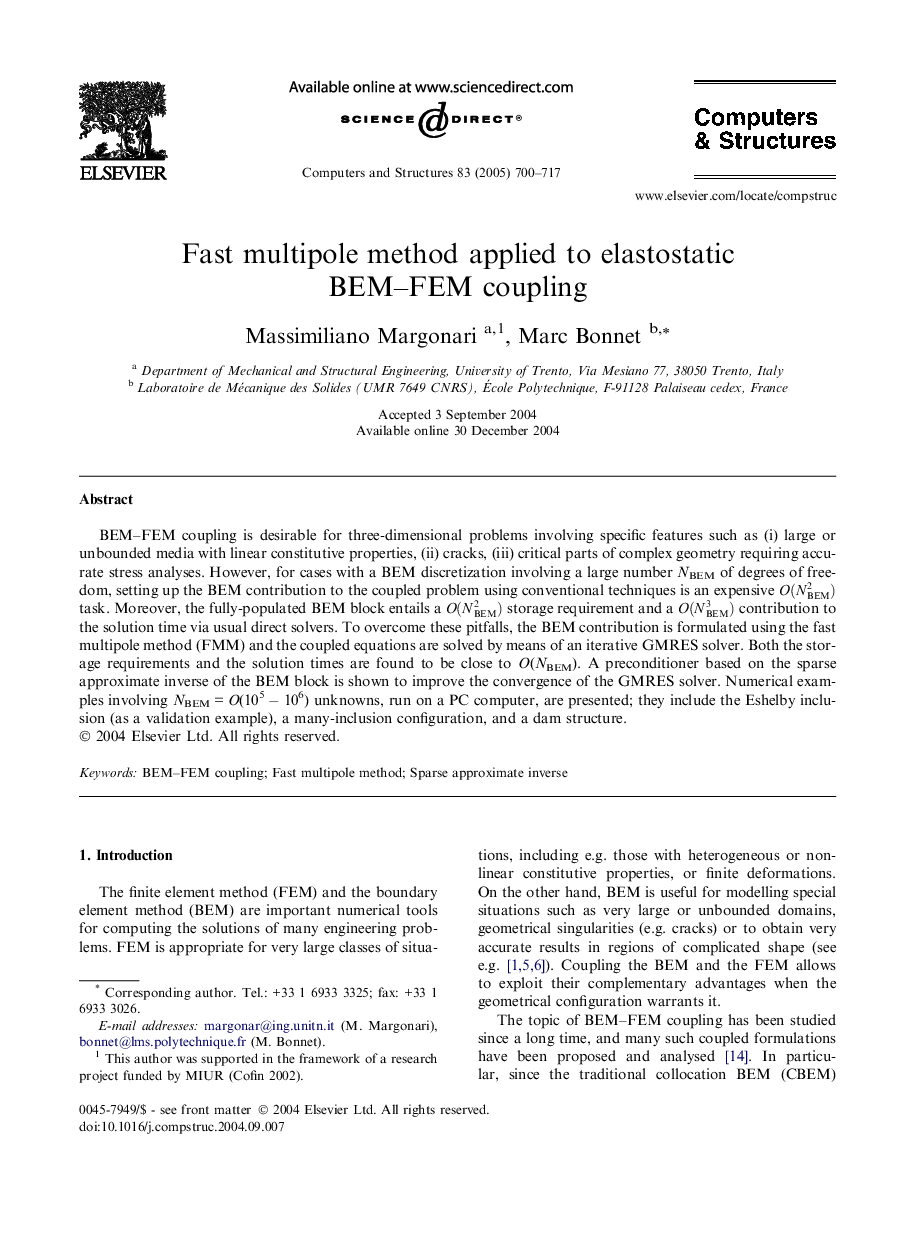| Article ID | Journal | Published Year | Pages | File Type |
|---|---|---|---|---|
| 9668205 | Computers & Structures | 2005 | 18 Pages |
Abstract
BEM-FEM coupling is desirable for three-dimensional problems involving specific features such as (i) large or unbounded media with linear constitutive properties, (ii) cracks, (iii) critical parts of complex geometry requiring accurate stress analyses. However, for cases with a BEM discretization involving a large number NBEM of degrees of freedom, setting up the BEM contribution to the coupled problem using conventional techniques is an expensive O(NBEM2) task. Moreover, the fully-populated BEM block entails a O(NBEM2) storage requirement and a O(NBEM3) contribution to the solution time via usual direct solvers. To overcome these pitfalls, the BEM contribution is formulated using the fast multipole method (FMM) and the coupled equations are solved by means of an iterative GMRES solver. Both the storage requirements and the solution times are found to be close to O(NBEM). A preconditioner based on the sparse approximate inverse of the BEM block is shown to improve the convergence of the GMRES solver. Numerical examples involving NBEM = O(105 â 106) unknowns, run on a PC computer, are presented; they include the Eshelby inclusion (as a validation example), a many-inclusion configuration, and a dam structure.
Related Topics
Physical Sciences and Engineering
Computer Science
Computer Science Applications
Authors
Massimiliano Margonari, Marc Bonnet,
